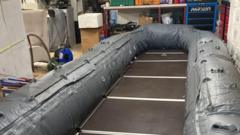
URBANA — As a high school junior looking to have an impactful role in our local democracy, I was excited to learn about the opportunity to serve as an election judge — a program run by the Champaign County Clerk’s Office to ensure that all elections are fair, free and accessible. “It is impossible to have an election without election judges,” says County Clerk Aaron Ammons. “It’s a core component of the election.
” Election judges, or poll workers, oversee voting at polling places on Election Day and during early voting. Their responsibilities include addressing voter issues and ensuring all voting progresses securely and fairly. Election judges must either be citizens of the United States and eligible to vote in the next election or juniors or seniors in high school.
To serve while still in high school, judges must have a minimum GPA of 3.0 on a 4.0 scale.
Ammons emphasizes the importance of youth participation in this year’s election. “I certainly encourage high school students to participate, whether they are able or eligible to vote at this point or not,” Ammons says. “They learn the process of helping someone vote.
They learn the process of the ins and outs of running an election, and all of the duties and responsibilities that go along with it.” Diza Baryshnikov, a junior at University of Illinois Laboratory High School and prospective election judge, says youth participation is important to understand various viewpoints and our government as a whole. “I think it’s really important for youth to begin taking part in civic engagement at an early age so that people can understand what’s going on in the government, because the government has such an impact on our lives,” Baryshnikov says.
“Even in the training ...
(I) learned a lot about how our government works with voting, and I have a behind-the-scenes view of what people actually do to collect the votes.” The county clerk’s office has faced challenges in organizing the election judge program, including finding enough judges to serve by party. As of last Wednesday, the election judge program was 53 Republican judges short of an overall total of 350 poll workers, Ammons says.
Bipartisanship is essential. Ammons says that when election judges are sent to retrieve mail-in ballots from drop boxes, the county clerk’s office sends one Democrat worker and one Republican worker to “serve as the eyes and ears for each party for anything they feel is inappropriate or illegal.” The ratio of Democrat versus Republican poll workers at a respective polling location depends on the partisan turnout of voters at the previous gubernatorial primary election: the more voters there are of a party, the more judges of that party there will be at a given polling place.
“It’s ...
difficult to get judges to serve because people are getting threatened, they’re being followed, they’re being harassed, and a lot of people just don’t feel like it’s worth it to do the service anymore if that’s what they have to deal with,” Ammons says. Ammons highlights the importance of early voting in this year’s general election. “We have 40 days of early voting here at the Brookens Administrative Center that began on Sept.
26, but we also have early voting locations that opened Oct. 21 running all the way through Nov. 4,” Ammons says.
Baryshnikov adds that serving as an election judge has helped to increase her worldview. “I find a lot more people have very different views than me ..
. so it’s nice to see all of the different views and different perspectives,” she says. To serve as an election judge, one must complete a four-hour training, take a quiz and offer availability.
Interested individuals can apply on the Champaign County Clerk’s website..













